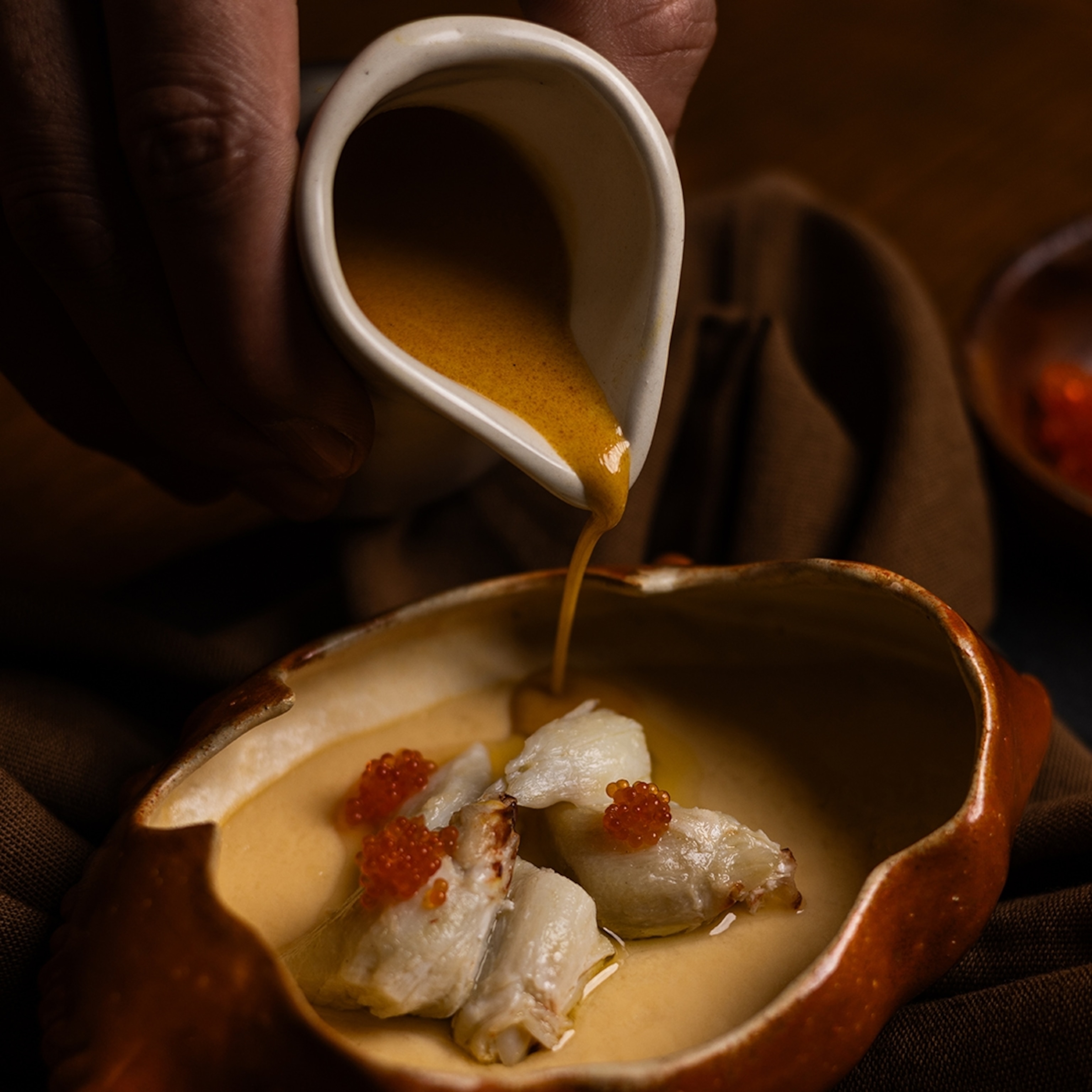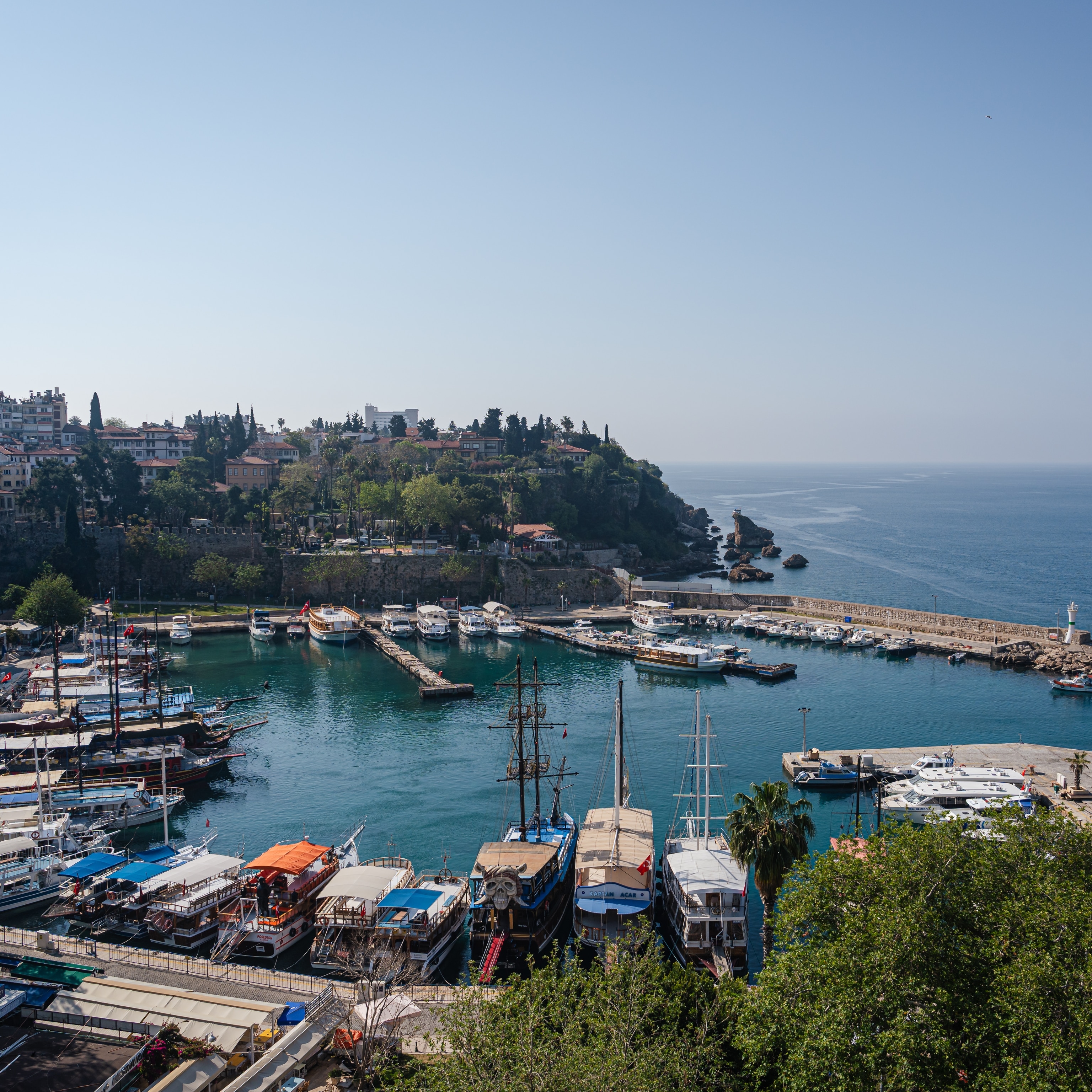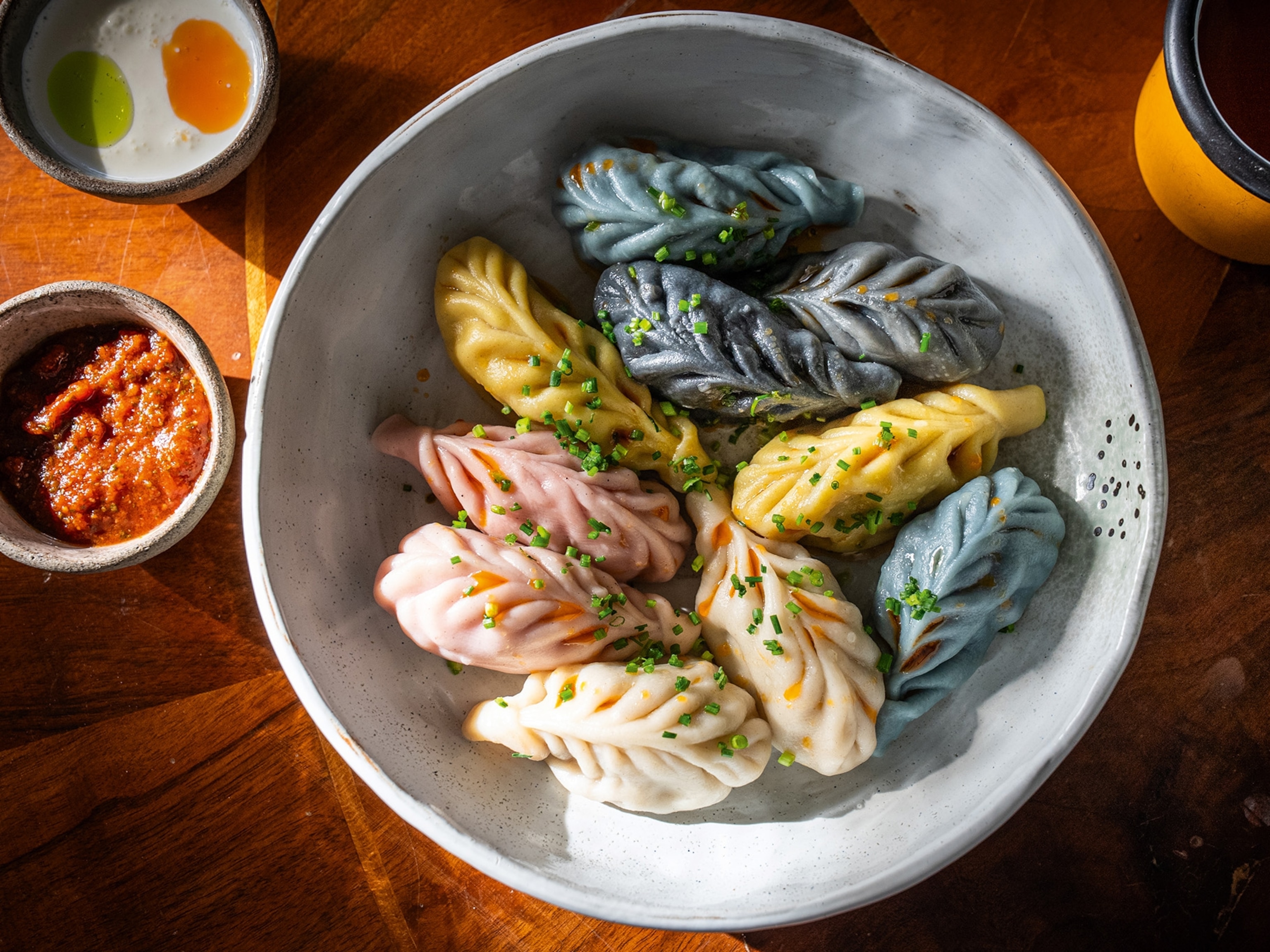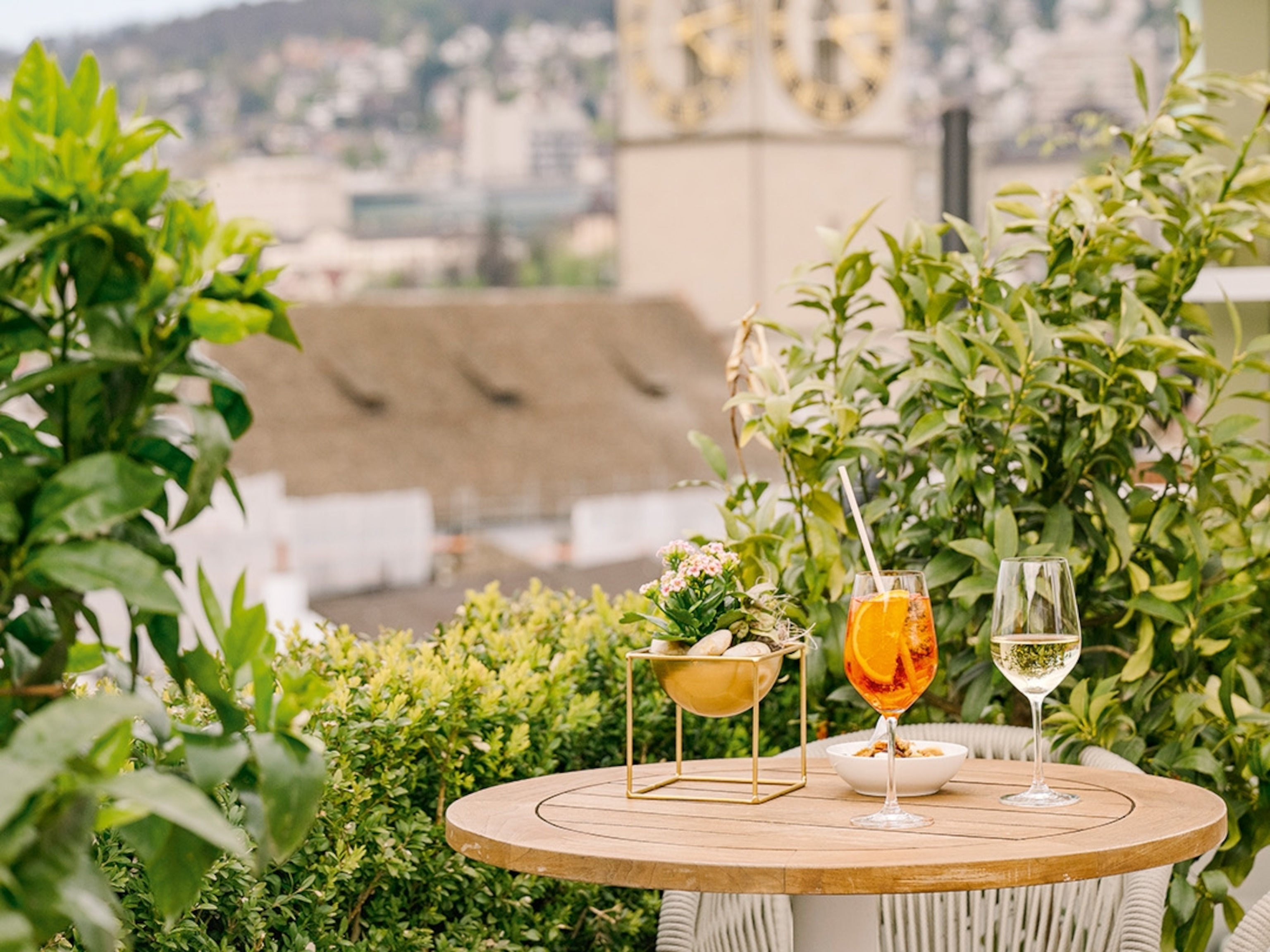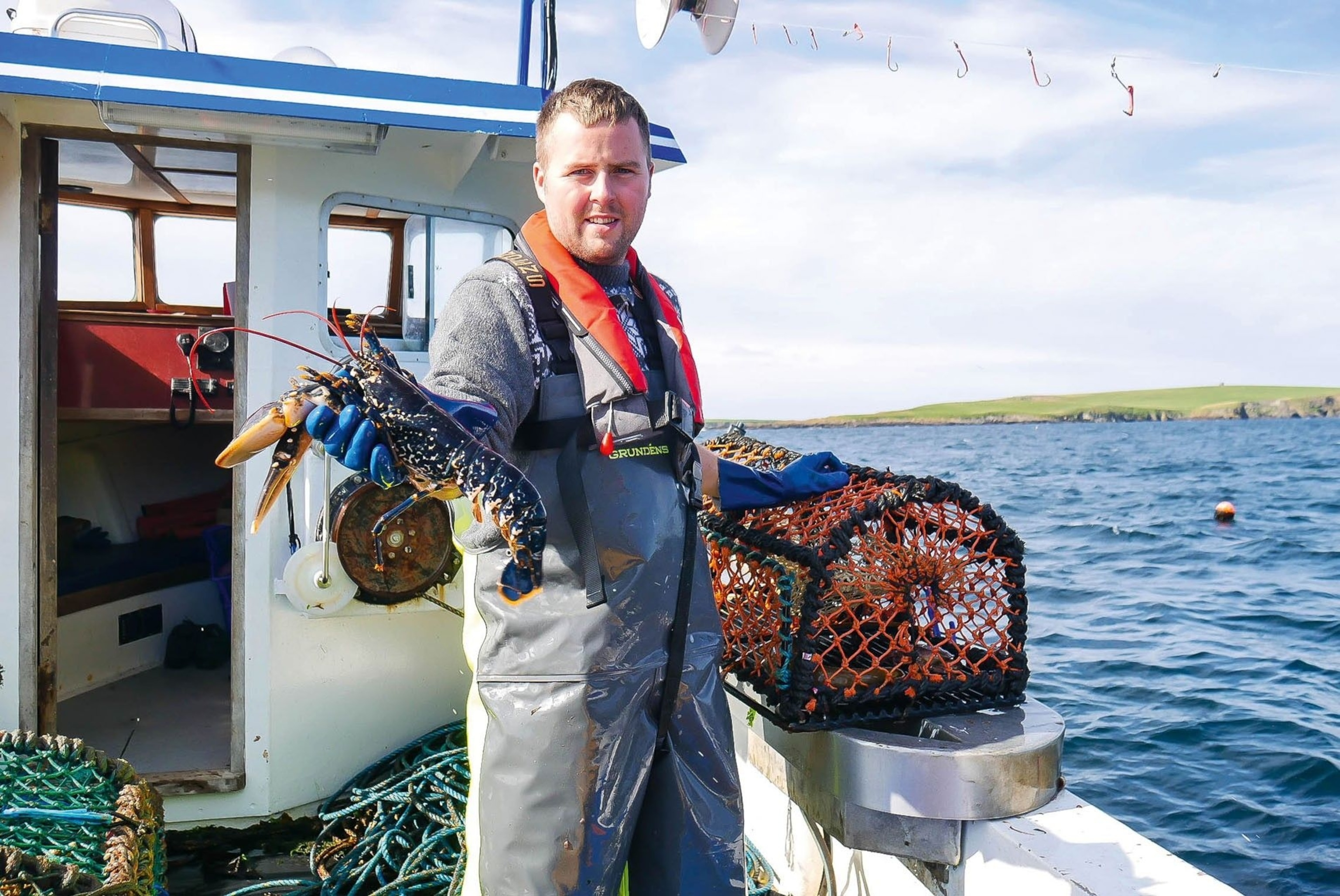
Eating in the elements: the innovative food scene in Scotland's Shetland Islands
The northernmost tip of the British Isles is an elemental place. And now, with a little innovative thinking, Shetland is producing exotic ingredients that are bringing new life to local dishes.
Ripe ears of sweetcorn poke from their green leafy casing; grapes hang from vines. Here in Northmavine, a wild, beautiful parish in the northern Shetland Islands where the elements combine tomake gardening something of an extreme sport, you wouldn’t expect to reap such incredible bounty. But under the shelter of thick polycrubs (a polytunnel/greenhouse hybrid designed to withstand high winds) people are growing produce that would, in the past, have had to travel hundreds if not thousands of miles to get here.
Margaret Roberts lives in a lovely quirky old house here in Shetland, a cluster of small, inhabited rocky islands lying roughly halfway between Scotland and Norway. It’s her polycrub I’ve come to see: it’s where the magic happens. Cherries, fire-red tomatoes and fat cucumbers are all flourishing under a roof held up by recycled feed pipes from the salmon fishing industry, a concept pioneered by Northmavine Community Development Company in a bid to get people growing their own, despite the elements.
“We get a lot of goodwill from folk because the product is fantastic and all the profits go back into the community,” says Margaret. “I’m really keen on growing food. I come from a middle-class crofting environment, so I’ve been used to really good-quality, home-produced food all my life.”
We step outside, over a wall and onto the rest of Margaret’s land where she digs me up the famed Shetland blacks, heritage potatoes that are actually tinged with blue. I’m with Tom Morton, an old pal from our days working at The Scotsman, and we’re collecting things to cook in the kitchen of the manse (parsonage) at Hillswick he shares with his wife, Susan Bowie, the local doctor. Together with his son, James, Tom wrote the book Shetland: Cooking on the Edge of the World. At the beach at the back of house we gather seaweed to wrap around a leg of lamb, which will be baked in the oven until tender.
“Shetland has always had some phenomenal natural resources when it comes to food — pristine seas teeming with the best fish and shellfish; great native breed lamb, mutton and beef; gloriously floury Shetland black potatoes. But the advent of polytunnels and polycrubs has unleashed a whole range of hitherto unavailable crops like tomatoes, corn, cherries, strawberries and more. Even stuck on a rock at 60 degrees north,” says Tom. In his book, the family explores ‘foy’, a celebration in Shetland that usually involves a feast and large amounts of alcohol. “This was once a marginal, seasonally impoverished place, and every meal had to count for both sustenance and joyful hospitality. It was foy that drew me here in the first place and is one of the things that keeps me here.”
In Shetland, you’re never far from the sea, its rhythms and — of course — its catch. Aboard the Sceptre, Ross Robertson at the helm, we travel out to sea from the twin Burra islands. This is the smaller of his family’s boats, the other, the Mizpah, is a large trawler. “We’re as many as 12 days at sea with the big boat, landing our catch two to three times. There are seven of us in the crew and we keep a man ashore,” he explains. Today, we’re trying to catch mackerel, running long lines out from the back of the deck. It’s a crystal-clear day and there’s not too big a swell, but the fish are scarce. “You need a lot of patience for it,” says Ross. “It just takes a good shoal of fish when the hooks are going up and down, and you can fill a fish box in minutes.”
Ross turns his attention to his 150 creels (wicker baskets) and starts to reel some in. We’re hoping for lobsters and velvet crabs, but again there’s not much doing. In total we land five mackerel and a few crabs — enough for us to return to Ross’s house for lunch. Later, at Frankie’s Fish & Chips in Brae, I dine on catch landed by the Mizpah: a ‘muckle’ (large) haddock fried in batter, served with chips and mushy peas — it’s glorious.
At Shetland Seafood Auctions, in Lerwick, I get more of an understanding of just how important the fishing industry is here. There are large boxes of megrim, haddock, hake and whiting, all on ice and ready to be shipped out after being sold.
Across the water from Lerwick is the little island of Bressay and as I alight the ferry, Chris Dyer is waiting to take me to Garths Croft, the home and smallholding he shares with his wife Afra. Like many other people in Shetland, Chris has a number of jobs — he’s an archaeologist working on the incredible Viking digs in Shetland, and a part-time member of both the fire service and the coastguard, but his biggest passion is this croft. Here, he breeds heritage Tamworth pigs and British saddleback boars — selling the meat to local chefs and cooks — and sheep he rears for the colour of their fleeces: “There are 60 markings of colour for Shetland sheep; we’re trying to bring back the old colours.”
The town of Lerwick is a lovely wee place, with grand sandstone buildings, streets bedecked with bunting and cute seafront houses called the Lodberries. There’s a cluster of rather chic restaurants and cocktail bars, cafes, galleries and shops. It’s a ‘capital’ steeped in tradition, but with a thoroughly modern side — you’ll find heart-warming Shetland food such as bannocks and soups of reestit mutton, while the local mussels — fat, orange and juicy — are some of the best you’ll eat anywhere in the world. Then, for international dishes that use the best of the islands’ produce, there’s The String, where chef Akshay Borges serves Goan fare, and C’est La Vie, a French restaurant with chef Didier Piquet overseeing the kitchen.
It’s in Lerwick that I notice how many ‘incomers’ have settled here, attracted by the remoteness and back-to-basics lifestyle. In summer, the long bright nights are glorious, while in winter your chances of seeing the Northern Lights are high. The local name for the Aurora Borealis has been adopted by Dave Williams, who runs Mirrie Dancers Chocolatier with his partner, Cathy. A former army chef, he moved here four years ago and began making confections flavoured with local ingredients — sea salt, heather, honey, whisky, gin and mead. The Raspberry Mirrie Dancer is tinged with the sparkling green lustre of the Northern Lights, the Clifftop Bar is flavoured with Arctic thyme and walnut.
As we walk along the cliff edge at Eshaness, the ocean thrashing below us, Tom explains how cooking here has evolved to suit the conditions. “Reestit mutton soup has to be Shetland’s great ‘national’ dish, the staple of winter dances and events like Up Helly Aa, the annual Viking fire festival held every January,” he explains. “It’s basically a tattie soup, with other vegetables, using reestit mutton as stock.”
The dish is a winter staple, and on my early autumn journey across the islands I don’t get to try it. I lament this miss to Tom. “Ach well, you’ll have to come back,” he laughs. “For reestit mutton and a foy.”

A taste of Shetland Islands
The String
Dishes here include pan-fried Shetland halibut with roasted cherry tomatoes and sauteed local greens, and pulled, rolled Shetland lamb with greens and lamb bone gravy risotto. There are also changing specials created by chef Akshay Borges, who grew up in Goa and combines his passion for Indian street food culture and Scottish cuisine. Three courses without wine from around £25 per person. thestringshetland.co.uk
The Scalloway Hotel
On the waterfront in Scalloway, Shetland’s ancient capital just six miles from Lerwick, the seafood is the highlight. Shetland lobster is simply grilled with butter and served with homemade chips. Starters include twice-cooked Cullen skink souffle, crispy potato and smoked haddock sauce, and pan-seared scallops, confit onion with a hazelnut and Mull cheddar crust. Three courses without wine from around £32 per person.
Fjara Cafe Bar
Set on the peninsula jutting over Breiwick bay, just outside Lerwick, Fjara is an all-day cafe with a great view. The mussels — cooked with garlic butter, shallots, Pinot Grigio, parsley and cream — are fabulous, served with homemade bread and chips. Dinner choices include starters such as Thai-style seafood broth, and a ‘sassermeat’ main along with apricots and pistachios as a stuffing for lamb. Three courses without wine from around £25 per person.
Five food finds
Reestit mutton
Mutton first salted in brine and then hung in the rafters (reest), smoked above a peat fire and left to dry for 10-15 days.
Sassermeat/saucermeat
Spellings vary for what’s essentially spiced minced beef beloved by Shetlanders, often fried and served on a morning roll.
Bannocks
Light and fluffy with a sour taste, bannocks are no-yeast breads that inspire much debate in Shetland as to how best to make them.
Seafood
Fish and shellfish as fresh as possible, harvested from some of the cleanest waters in the world.
Reestit mutton and tattie soup
A soup made from reestit mutton, Shetland black potatoes, turnip, carrots and onion.
Essentials
Hayhoull B&B in Bigton has double rooms from £80, B&B. Ortolan House B&B, Georgian townhouse in Central Lerwick has two guestrooms, from £70, B&B. LoganAir flies to Sumburgh in Shetland from London Southend via Aberdeen from £65, and direct from several UK regional airports. More information: visitscotland.com shetland.org
Published in the April 2020 issue of National Geographic Traveller Food
Follow us on social media
Facebook | Twitter | Instagram
